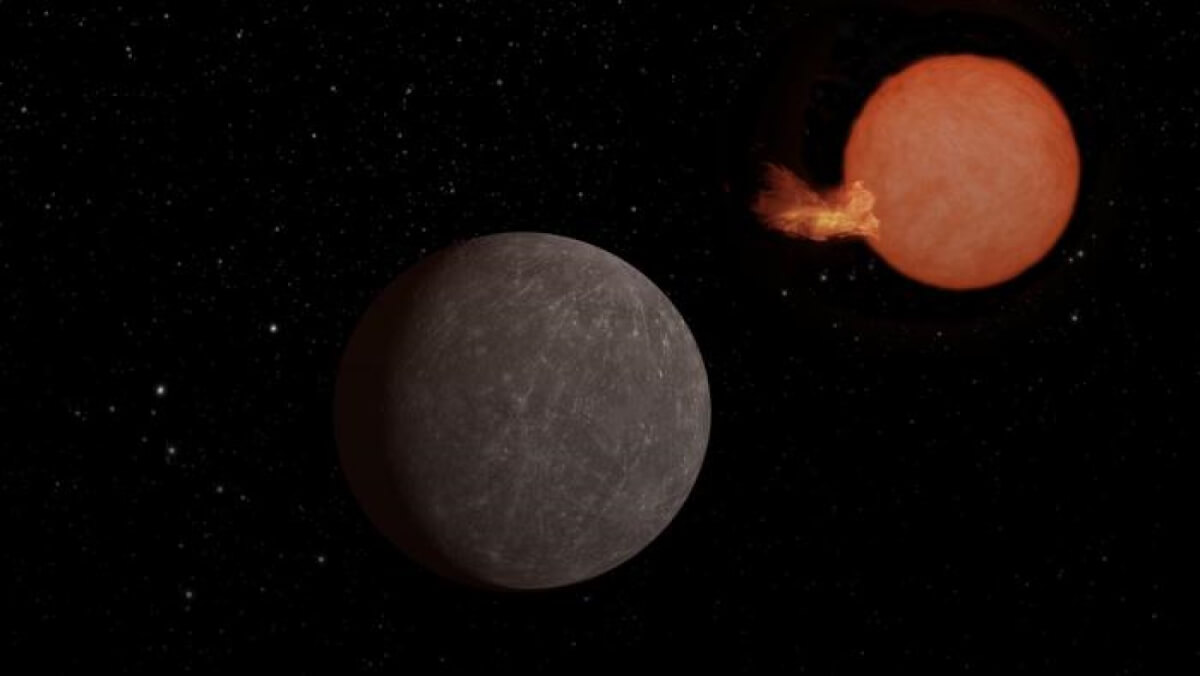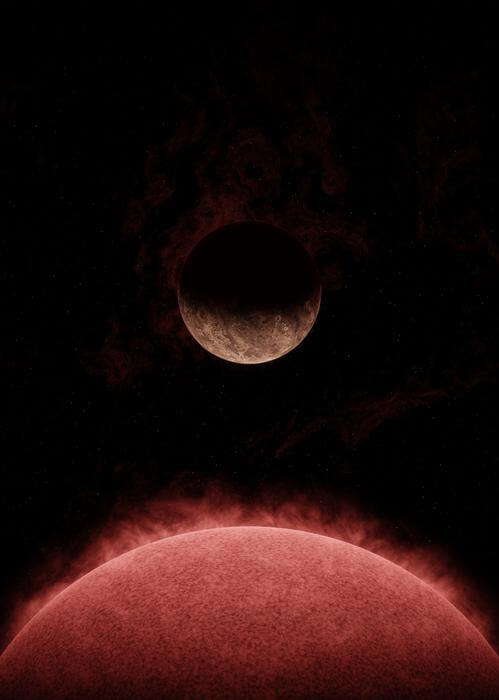
Artist's view of exoplanet SPECULOOS-3 b orbiting its star. The planet is as big as the Earth, while its star is slightly larger than Jupiter, but much more massive. (CREDIT: NASA/JPL-Caltech)
LIÈGE, Belgium — Scientists have discovered an Earth-sized planet orbiting a bizarre “ultra-cool” red dwarf star just 55 light years away from Earth. It's only the second planet ever found circling one of these strange and relatively tiny stars.
The newly detected world, which astronomers call SPECULOOS-3b, whips around its parent star in a blistering 17-hour orbit. Despite its speedy lap time, however, days and nights seem to never end on this exotic exoplanet. That's because it is likely “tidally locked” — keeping the same side of the planet permanently aimed at its star, just like the same side of the Moon always faces Earth.
The star itself is an oddball as well. It's more than twice as cold as our Sun, 10 times less massive, and a whopping 100 times dimmer. Yet these weird ultra-cool dwarfs are actually the most common stars in our Milky Way galaxy, making up 70 percent of stellar residents.
“We designed SPECULOOS specifically to observe nearby ultracool dwarf stars in search of rocky planets that lend themselves well to detailed studies,” says Michaël Gillon, an astronomer at the University of Liège and lead author of the study, in a media release. “In 2017, our SPECULOOS prototype using the TRAPPIST telescope discovered the famous TRAPPIST-1 system made up of seven Earth-sized planets, several of them potentially habitable. This was an excellent start!”
The new findings, published in the journal Nature Astronomy, was made by Gillon's SPECULOOS project, which stands for the “Search for Planets EClipsing ULtra-cOOl Stars.” It uses a global network of robotic telescopes to stare at nearby ultra-cool dwarfs, looking for periodic dips in brightness that signal a planet may be passing in front of that particular star.

“The small size of ultra-cool dwarfs makes it easier to detect small planets,” explains Georgina Dransfield, a postdoctoral researcher at the University of Birmingham.
Most exoplanet discoveries start with computer algorithms picking out potential candidates, which are then inspected by human eyes. In this case, however, the team got into the habit of quickly eyeballing each night's fresh data themselves.
“SPECULOOS-3b is special in that its stellar and planetary properties make it an optimal target for JWST, which is capable to get information about the composition of the rocks that make its surface,” Dransfield continues.
Indeed, the James Webb Space Telescope could provide unprecedented insight into the geology and mineralogy of this exotic world. It could even detect signs of an atmosphere, a key ingredient for life as we know it.
“While ultra-cool dwarf stars are cooler and smaller than our Sun, their lifespan is over a hundred times longer – around 100 billion years – and they are expected to be the last stars still shining in the Universe,” explains Amaury Triaud, a professor of exoplanetology at the University of Birmingham.
With the universe's most abundant stellar residents as targets, future discoveries could bring the closest potentially habitable planets right into our cosmic backyard.










